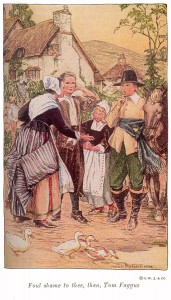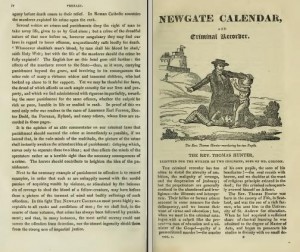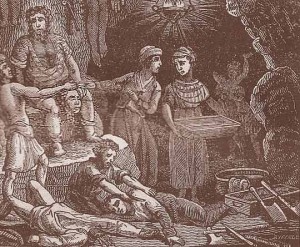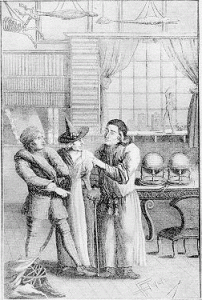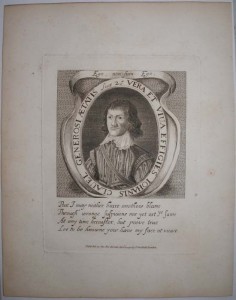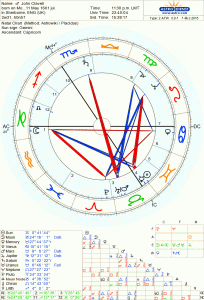My first true highwayman love was a 17th century real-life reformed rascal, Tom Faggus. I met the endearing version of him that lives inside the cover of RD Blackmore’s Exmoor classic Lorna Doone in the summer I turned nine years old. I was perhaps less in love with Tom and more with his wise and willful mare, Winnie.
My cup ran over when I became the proud eleven-year-old ‘owner’ of a similarly independent-spirited mare, called Madame Sherry. I promptly became Tom Faggus and rechristened her Winnie. In truth, Sherry/Winnie owned me. Together, in those halcyon years before parents worried about letting children roam, we searched fields and lanes of rural Oxfordshire, holding up make-believe stagecoaches and robbing imaginary rich to support the poor.
It came naturally to me then to side with heroic figures of redistributive justice. It would be years before I awoke to a more nuanced notion that the world can be a complicated place; that nobody has a monopoly on truth and right, and that force is force, no matter who brandishes the pistols…
By the time I encountered John Clavell, during researches for Nights of the Road, I was ready to cast a more critical eye over highwaymen. I dipped into the Newgate Calendar, which recorded mostly 18th and 19th century executions, but offered occasional examples of 17th century knights of the road less lucky than Clavell in escaping the hangman’s noose. www.pascalbonenfant.com/18c/newgatecalendar/ncpre1700.html
Even allowing for the moralizing goals of that monthly bulletin, which sat alongside other such improving literature as the Bible, Pilgrim’s Progress and the Book of Martyrs, some tales in the Calendar make my hair curl. Take Sawney Bean of Leith and his family. Their habit of removing all evidence of their crimes by living not only on the wealth stolen from their highway victims but also on their blood and bones, might give Hannibal Lecter pause (if not further inspiration). www.pascalbonenfant.com/18c/newgatecalendar/sawney_bean.html
Another Sawney, also hanged in Leith, is reported in the Calendar as having led a long and profligate life before swinging in 1635. Among his well-planned and executed nefarious deeds, Sawney Cunningham slaughtered the wealthy, would-be lover of his virtuous wife, and let others hang for the crime. Leaving others to take the heat for him became a pattern. Over time, Cunningham branched out into directing a gang of highwaymen in a series of premeditated crimes. With his facile mind and tongue, he would insinuate himself into a band of traveling strangers and lead them into an ambush by his gang. To avoid suspicion of his involvement, he would be the first to be ‘robbed’ by his own men.
Cunningham overreached himself, after visiting an astrologer and telling the fortune-teller’s fortune by predicting the man’s impending doom!
Said astrologer was sufficiently provoked as to break his rule of never giving details of a man’s end. He declared that Cunningham would kill his own uncle within the month and hang for his murder. This came to pass and with a touch of poetic justice, since Sawney was informed on by his captured gang. www.pascalbonenfant.com/18c/newgatecalendar/sawney_cunningham.html
When John Clavell bantered his way onto early pages of Nights of the Road, without awaiting an invitation, I paid passing attention to his time and date of birth, mentioned by his biographer, as being recorded in several Bodleian Library mss folios. Pafford described one, tantalizingly far from my reach in distant Oxford, as actually containing a horoscope for ‘John Clavell the great Theife borne 1601, 11 May, 11.30pm’.
Unfortunately, I soon found myself struggling with this limited information. Try as I would to go with the stated ‘facts’, I could not rid my mind of the notion that Clavell was more likely to have been an airy Gemini than an earthy Taurus. I have both signs in my close family, including a Gemini mother and brother born on the same day. I decided to trust my gut and write the man as I experienced him. His own pen had been light, airy and entertaining, but I was surprised to find how bombastic he could be and how much he tended to complain and blame others in conversation.
The John Clavell I came to know was quite a grumbler and grouser, for all he could suddenly display sparkling wit and charm. I sensed he lived much of his life without an awakened conscience, even though his ‘Recantations of an Ill-Spent Life’ entertained and amused. His poetical address to his “ever dear and well approved good uncle, Sir William Clavell” asked for forgiveness (on which his future happiness apparently depended) and he promised not to return to his evil course of life or “O, then for ever disinherit me!” Presumably Sir William was unimpressed, since he left his estate to a distant relative.
Through following years, while Nights sat on its back burner, a flurry of Internet interest developed around Clavell. In May 2014 a horoscope of him cast by an Australian called Sy Scholfield came online. I cheered and gave a vote of thanks for Sy and the Astrodata Bank. It revealed that, when reading the biography, I had forgotten to account for the difference between Julian and Gregorian calendars. I had given myself a whole load of unnecessary heart searching, since a 10 day adjustment made Clavell – yes! – a Gemini. My ‘error’ was also a gift, for it has led me to be more willing to trust and go with my gut when facts fail. http://www.astro.com/astro-databank/Clavell,_John
Impressed by the depth of study that went into John Pafford’s biography, I have still felt disinclined to buy fully his verdict that poor parenting, especially by his father, accounted so significantly for John Clavell’s fall from virtue. While nurture and early childhood years do condition, a different perspective on the world also holds that we choose the lives that we need, in order to grow and fulfil the mysterious purpose that lies behind our individual incarnation.
When writing Nights, I did not use Gene Keys to amplify biographical researches, as I have begun to do for its sequel when data is available. I was interested, though, to revisit John Clavell’s story. I won’t go over ground covered in an earlier blog description of Gene Keys (you can find it here at Gene Keys as a Tool for Historical Character Development ) but I do want to share the details of Clavell’s Activation Sequence, those four cornerstones that help to define and inform a life’s journey. They are as follows:
Life’s Work: GK 20.1 Shadow: Superficiality (Repressive: Absent; Reactive: Hectic); Gift: Self Assurance; Siddhi: Presence
Evolution: GK 34.1 Shadow: Force (Repressive: Self Effacing; Reactive: Bullish)
Radiance: GK 55.5 Shadow: Victimization (Repressive: Complaining; Reactive: Blaming); Gift and Siddhi: Freedom
Purpose: GK 59.5 Shadow: Dishonesty (Repressive: Excluded; Reactive: Intrusive); Gift: Intimacy; Siddhi: Transparency
The picture that this retrospective Gene Keys study offers blows me away. Look at those four crucial Shadow areas, in a man who spent so much of his early life stealing and obliging others to hand over their possessions!
Richard Rudd writes of Superficiality, the shadow energy that John Clavell may have wrestled to transcend throughout his life’s journey, by reminding us, “When we functioned from instincts, we had very little sense of morality or conscience.”
While still supported by his family and long before taking to the road as a highwayman, student John Clavell was already sufficiently amoral in attitude and light-fingered in action as to steal plate from his own Oxford College.
The GK 20 challenge for John would have been to move beyond any fear that was keeping him ‘on the fringe of life’. By developing the gift of self assurance that would have him trusting in whatever life offered, he would no longer have felt so driven to force his way on others, and take whatever his unconscious and hectic activity impelled him to believe in the moment was his by right.
Clavell did not learn from his first brush with prison and subsequent pardon. It took a death sentence and two years deprivation of all freedoms except those of contemplation and writing, for him to declare his intent to recant, mend his ways and seek another path. That he made some progress is suggested by his life after his pardon and release, reportedly as a lawyer, physician and writer. It is nearly all self-report, however, and I wonder if, by juggling many disparate balls in the air, he had learned yet to relax and surrender into a less driven lifestyle?
John Clavell did not live into old age. The pleurisy that carried him off in his early forties may have been aggravated by years in prison. I cannot believe he ended his life fulfilled and satisfied. Other aspects of his Gene Key profile, which lie beyond the scope of today’s blog to explore, may have amplified shadow tendencies toward dissatisfaction (GK58) and stress (GK52). The potentially transformative 55th Gene Key of his Radiance, that would have affected his physical wellbeing, repeats in another part of his profile relating to his core wound and vocation. This makes his later choices of law and doctoring (although he qualified in neither) particularly interesting.
No wonder I picked up the sense of a complainer and blamer! With GK55 repeating in his profile John Clavell must have found it doubly easy to identify as a victim. The 55th Gene Key deserves a blog article or three in its own right. Richard Rudd describes it as having a ‘potent and profound message’, playing a central role in the awakening of humanity and transformative change that we are presently undergoing. If interested, you can get a free pdf copy that goes in depth into Gene Key 55 here, and you may also watch the video here or at the site: www.genekeys.com/gene-keys-book/
From a deeper exploration of his profile, it does not surprise me that John Clavell became one of those rare highwaymen of the 17th century who succeeded in remaking his life after a death sentence. I resonate with a more measured view than that of Pafford, his enthusiastic biographer. This suggests that, “On his release Clavell does seem to have reformed to some degree – at least he wasn’t convicted of any further thefts. It is optimistic to accept the rest of his life was blameless.” The perspective is buttressed by observing Clavell’s ongoing record of litigation with creditors, his marriage at age 34 to a nine-year-old, and several concurrent promises of the sale of his father’s manor to different people. www.beggarsbush.org.uk/john-clavell-a-lost-prologue-to-the-beggars-bush-1637/
John Clavell lived in an era when ancient structures were being shaken and shattered, as humanity flexed and sought to awaken from its trance and claim its birthright of freedom. With his prominent 55 Gene Keys placements, he may have failed to bathe in the siddhi of freedom before the end of his life, yet his unique tessera still attracts the eye when we gaze upon a 17th century mosaic of humanity’s story.
It beckons again as he breathes his spirit into Nights of the Road and elsewhere in our times. It amuses me especially to discover that the college from which the colorful Clavell stole now boasts him in its list of ‘Famous Brasenose Names’. www.bnc.ox.ac.uk/about-brasenose/history/222-famous-brasenose-names/489-john-clavell-highwayman-and-playwright
Yes, this particular knight still rides with a certain panache on the roads of our 21st century imaginations.
And I’m enchanted to see my old friends, Tom Faggus and Winnie, given a recent new incarnation in a children’s book, which seems to have discarded the oh-so-yesterday Tardis in favor of ‘horsebox as time machine’!

